Paris Pattern
The Paris pattern was established as such around the middle of the seventeenth century (based, perhaps, on the cards of Hector of Troyes).
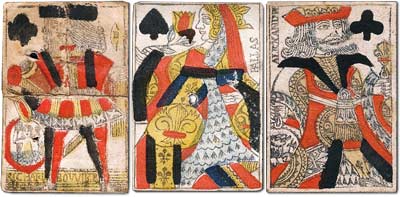
Above: Alexander, the most famous conqueror of Western history, as the king of clubs. Alexander the Great’s relentless energy and ambition drove him to explore remote parts of the world.
Although many of the figures were already known on earlier cards, the “Paris pattern” consolidated around the middle of the seventeenth century (based, perhaps, on the cards of Hector of Troyes). Single-figure courts prevailed until around 1830 when the double-ended version came into use. The court cards are usually named, and the reason for, or origins of, these names seems to derive from legendary heroes of antiquity. The Paris court card designs also appear in other parts of Europe as provincial variants (e.g. Belgian 'Genoese' pattern, Italian 'Piedmont' pattern). See Ken Lodge's Blog►
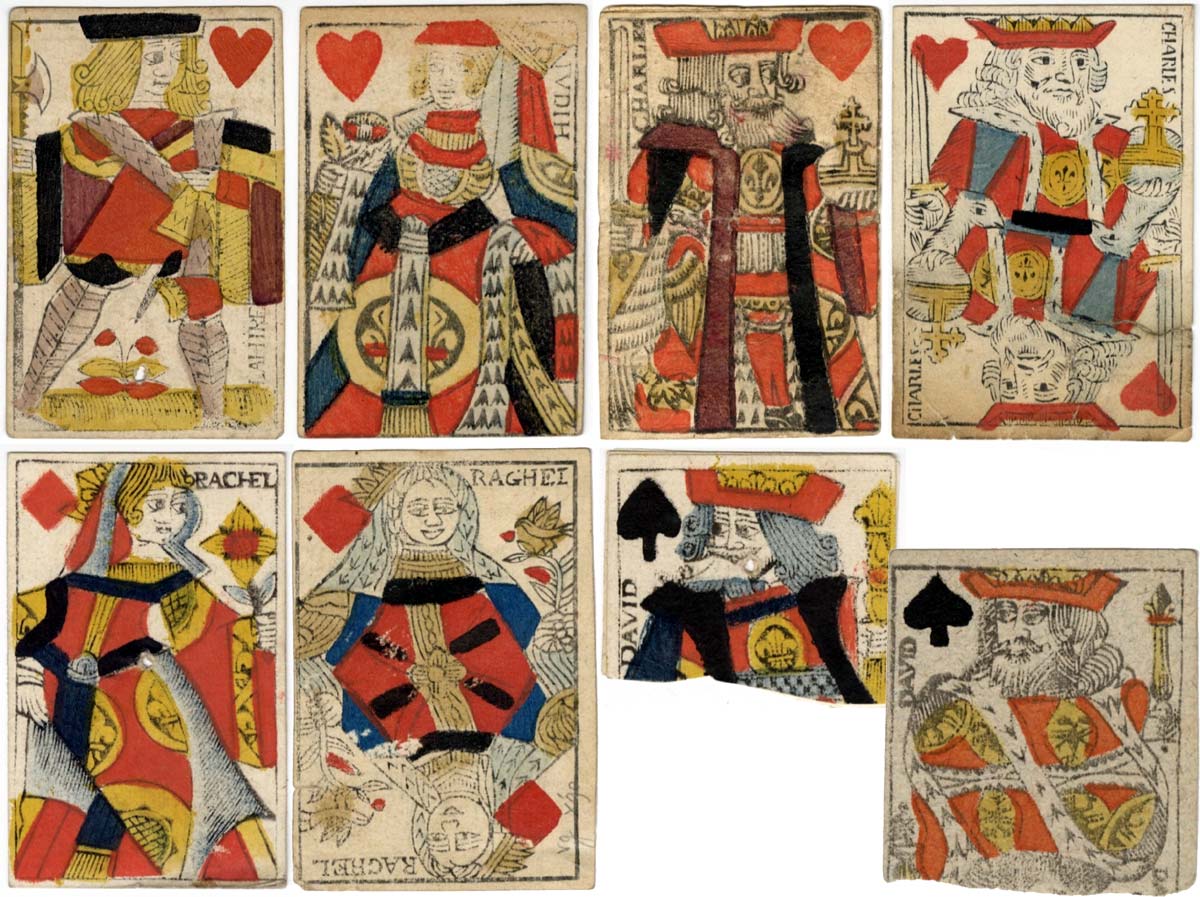
Above: a number of single cards, from different packs of different ages, demonstrating the Paris pattern, both single and double-ended. Each one is named after a legendary or historical person.

Above: Paris pattern, 1708. Several cards have the inscription ‘G[énéralité] de Paris’. Source Bibliothèque nationale de France • Cartes de tête issues d'un jeu au portrait de Paris►
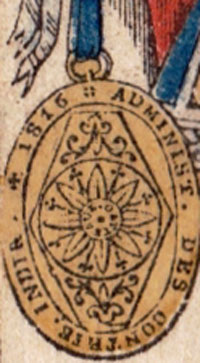
In the middle of the eighteenth century legislation was introduced making the Paris pattern the official portrait or pattern for the whole of northern France.
The outsized medallion held by the Jack of Clubs in his right hand was redesigned by Nicholas Marie Gatteaux, a member of a group of engravers who redesigned and standardised the Paris Pattern in 1813. Within this medallion are The Gatteaux Numbers. This was a time of massive French endeavour to standardise everything French under the “Code Napoleon” and set the pattern in a certain manner to last forever with no rogue variations. Well they certainly succeeded for a long time with the Paris pattern; introduced in 1813, the date on the medallion changed from time to time as follows:
all dated 1813
all dated 1816
all dated 1827
all dated 1853 from now on.
These rules were dropped in the 1940s (not forever after all!)
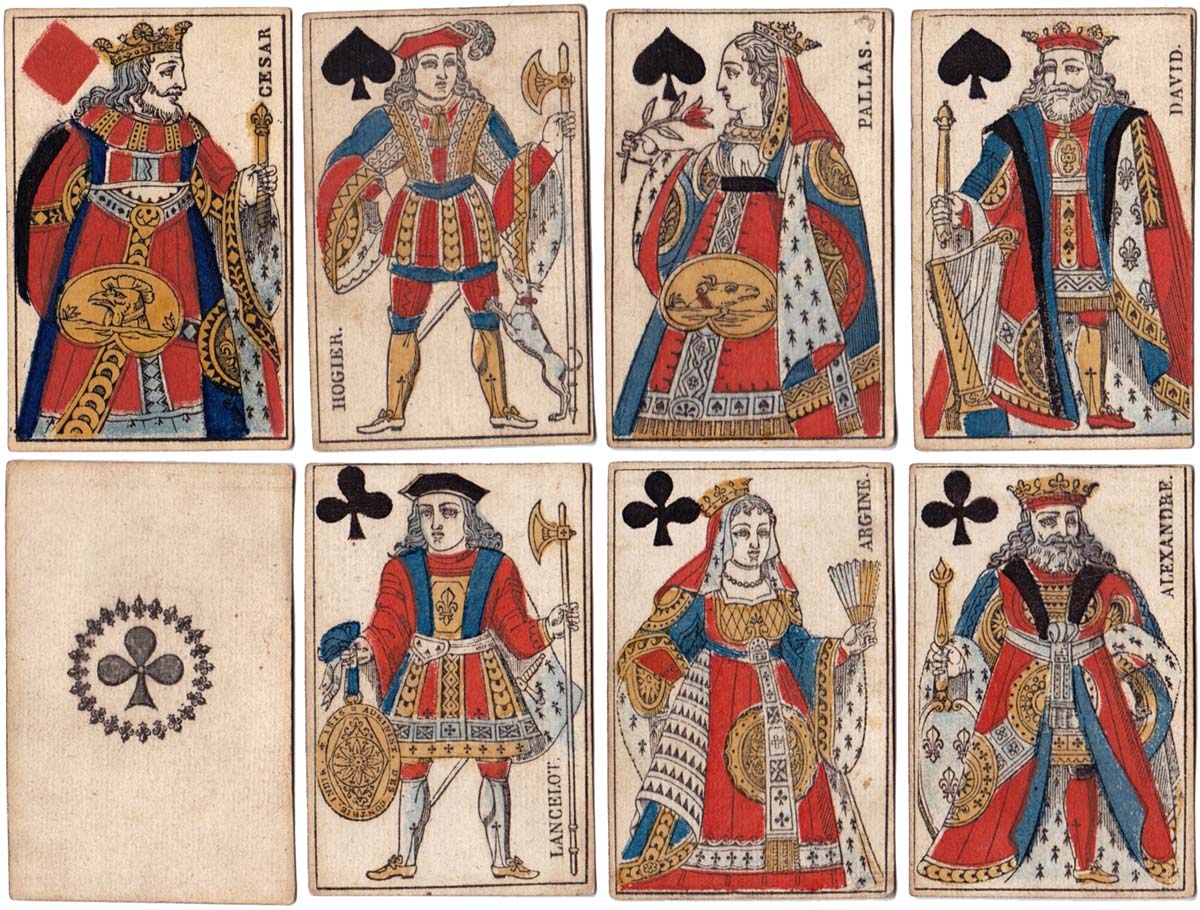
Above: cards from full-length version of the Paris pattern, c.1816-1827. Image and notes courtesy Rex Pitts.
In the double-ended versions, although more convenient, many charming features of the designs are lost.
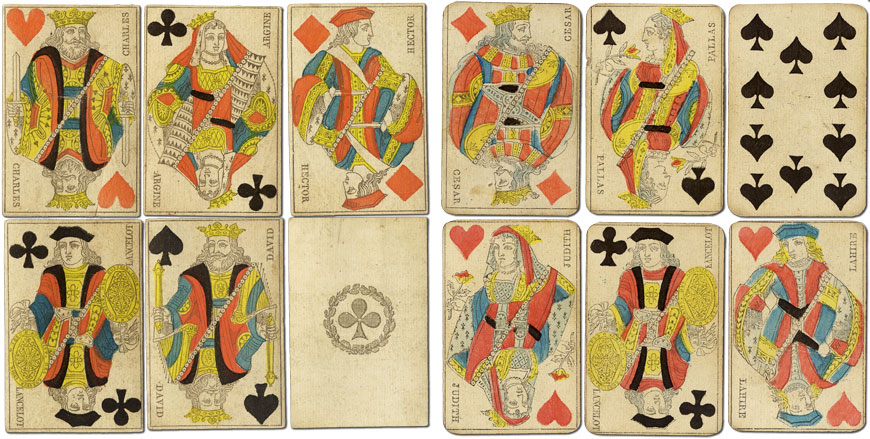
Above: two examples of standard double-ended Paris pattern playing cards, made by B. P. Grimaud, c.1855-75. Both sets are stencil-coloured. The left-hand set is from a 32-card deck and has square corners. The right-hand cards are from a 52-card deck, with rounded corners. There is an imperial eagle watermark on the right-hand cards. See a typical wrapper►
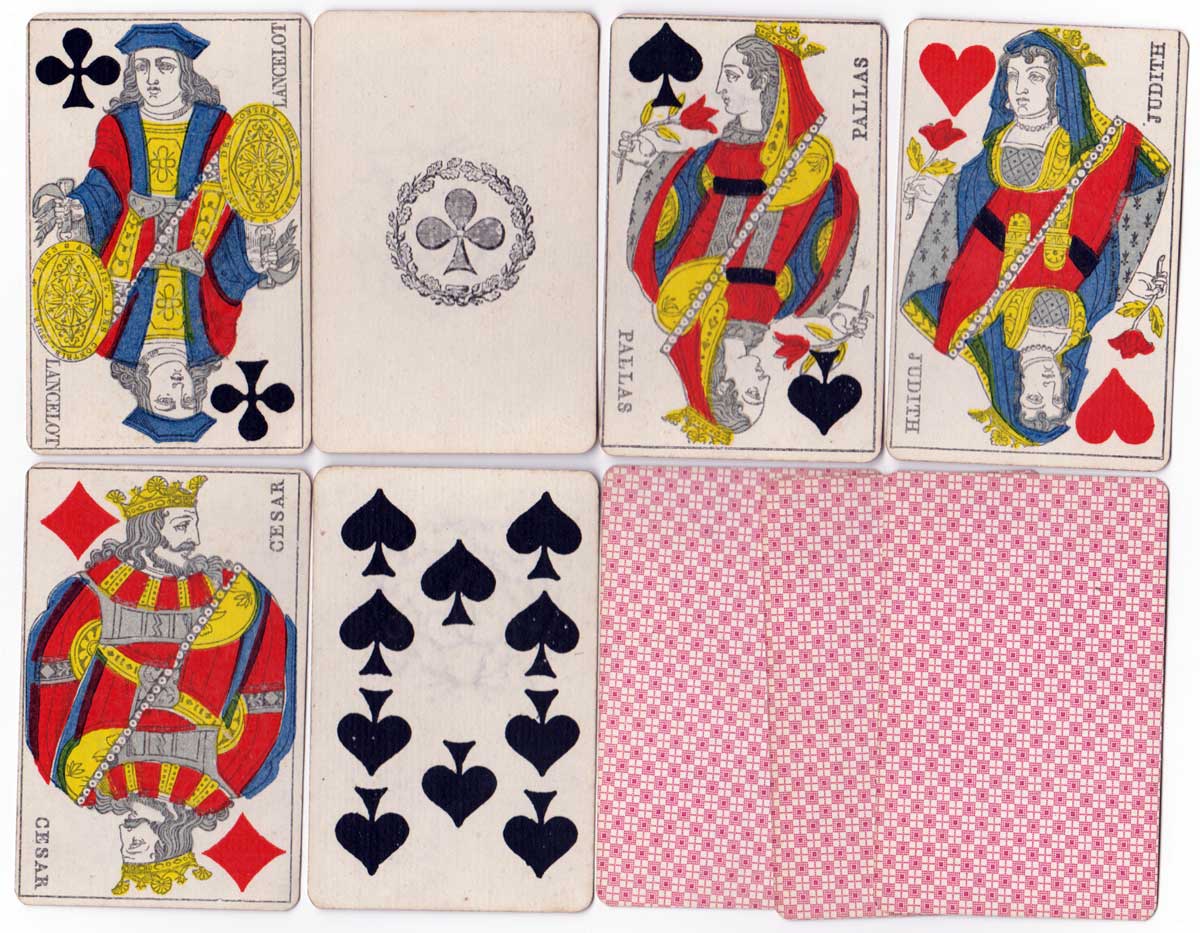
Below: embellished 'Paris pattern' cards specially designed for Lanvin, c.1980

For derivatives of French standard patterns, see 
See also: decks manufactured in Germany by Johann Forster, Johann Backofen, Joseph Losch►

By Simon Wintle
Member since February 01, 1996
Founder and editor of the World of Playing Cards since 1996. He is a former committee member of the IPCS and was graphics editor of The Playing-Card journal for many years. He has lived at various times in Chile, England and Wales and is currently living in Extremadura, Spain. Simon's first limited edition pack of playing cards was a replica of a seventeenth century traditional English pack, which he produced from woodblocks and stencils.
Related Articles

Never Mind the Belote
Limited edition Belote pack with designs by a collective of 24 street artists.

Sannois dans les étoiles
Celebrities and buildings associated with Sannois, a commune in the suburbs of Paris.

Le Globe Céleste
Views and plans of five international exhibitions held in Paris between 1855 and 1900.

Le Journal de Mickey
Perforated sheet of cards with Disney characters issued with the magazine Le Journal de Mickey.

Tarot hiéroglyphique égyptien
The design of the cards draws inspiration from various religious and philosophical traditions merged...

La Réussite (Sébastien Féraut)
Sébastien Féraut’s designs inspired by the animal kingdom for a set promoting patience games.

Le Tarot de Sète
Reinterpretation of the Tarot de Marseille by Julien Labat, an artist from Sète.

Oracle Rock
Cartomantic set depicting rock and pop stars, designed by La Rata, with a book by Virginie Despentes...

Jeu Numismatique
European coins of all periods replace the traditional courts and pips.

Jeu Philatélique
Cards with French postage stamps featuring famous literary figures.

Tarot Philatélique
Tarot game pack with French postage stamps on all the courts, aces and trumps.

Jeu Philatélique – Les Colonies Françaises
Philatelic card game featuring real postage stamps from the French colonies.

Bertschinger y Codina - Cartes Françaises
French ‘Paris’ pattern made by Bertschinger y Codina, Barcelona, c.1850.

Tarot Actuel 1984
Major arcana to cut out, issued with the French magazine Actuel, using photographic images.

Spanish pattern by Eugène Boisse
Spanish pattern published by Eugène Boisse, Bordeaux.

Catalan pattern by B.P Grimaud
Standard Spanish Catalan pattern deck made in Paris by B.P Grimaud.
Most Popular
Our top articles from the past 28 days

